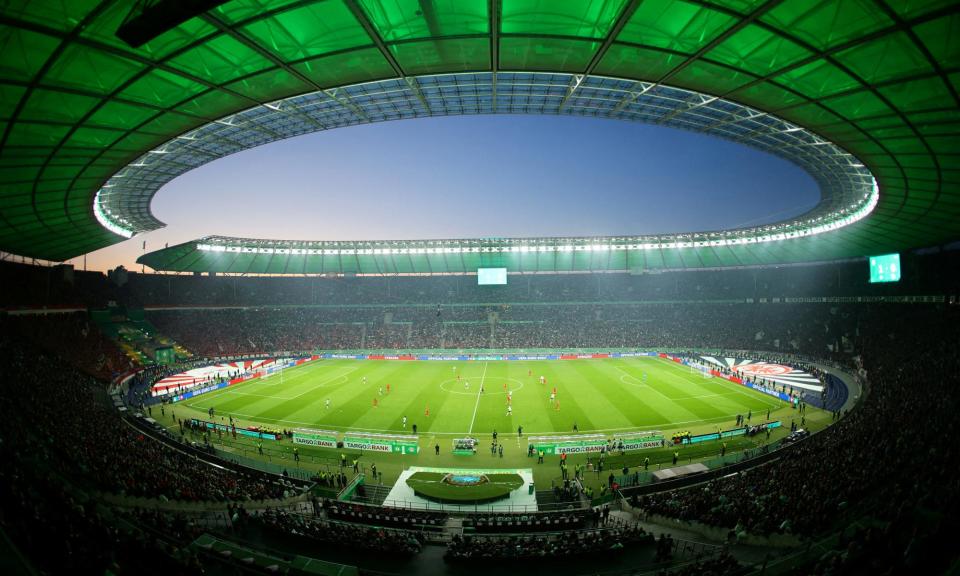Euro 2024 viewers will see how ‘snickometer’ technology can aid decisions

Fans watching Euro 2024 on television will benefit from an equivalent of cricket’s “snickometer” for the first time this summer, potentially offering greater clarity around handball and offside decisions.
“Connected ball” technology, which fits match balls with a motion-sensing microchip that can track every touch at a rate of 500 times a second, will be used in Germany after being deployed effectively at Qatar 2022. It is sensitive enough to determine whether the ball brushed a hand en route to goal or whether a player strayed beyond the last defender at the precise moment it was kicked.
Related: Form, injuries and mood: how are the Euro 2024 favourites shaping up?
The microchip was a success in Qatar, where it was deemed to help VAR officials make decisions in real time. One example was a goal scored by Portugal against Uruguay, which was widely believed to have been glanced in by Cristiano Ronaldo despite Bruno Fernandes being credited. The following day Adidas, which has provided the technology, released a graphic similar to that used in cricket – which tracks external force on the ball in the form of a “heartbeat” – showing Ronaldo had not applied the final touch.
Now those images will be made available to viewers whenever they are used to make a significant judgment during a European Championship game. It is part of a wider transparency drive within Uefa that focuses particularly on calls made via VAR, which often leave supporters in the dark. In another new development, giant screens inside stadia will offer technical explanations of VAR calls, fleshing out why they were made. Those will also be made available to broadcasters.
“We have the best technology available,” said Roberto Rosetti, Uefa’s chief refereeing officer, who took charge of the Euro 2008 final between Spain and Germany. Rosetti outlined the systems during a presentation here in which new rules aimed at curbing dissent were also detailed.
During the tournament, referees and captains will be invited to engage in clear dialogue around key decisions. In particular, the referee will be able to explain the reasons for VAR rulings to the relevant captain, or another nominated player if the skipper is a goalkeeper. The captain will be expected, in return, to ask his teammates to keep their distance from the referee and not surround him. Yellow cards will be given to players who transgress. Fourth officials will offer explanations to the managers. “We are doing this for football,” said Rosetti, who has explained the change to all 24 teams. “For the image of the game, for the next generation of young players and referees, for the image of football.”
Rosetti played down any risk of major VAR delays, pointing out the absence of interventions in recent club competition finals. Making the game flow in other areas is a bigger priority. “If we study the major matches and wasting time, VAR is nothing,” he said. “We see seven or eight minutes of time lost to free-kick situations. Throw-ins, goal kicks, corners, substitutions … VAR is really the last of the last.”

 Yahoo Sport
Yahoo Sport 






































